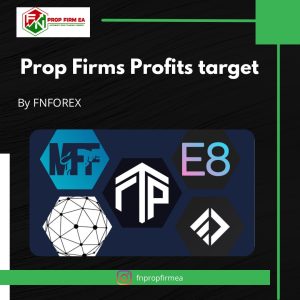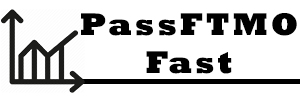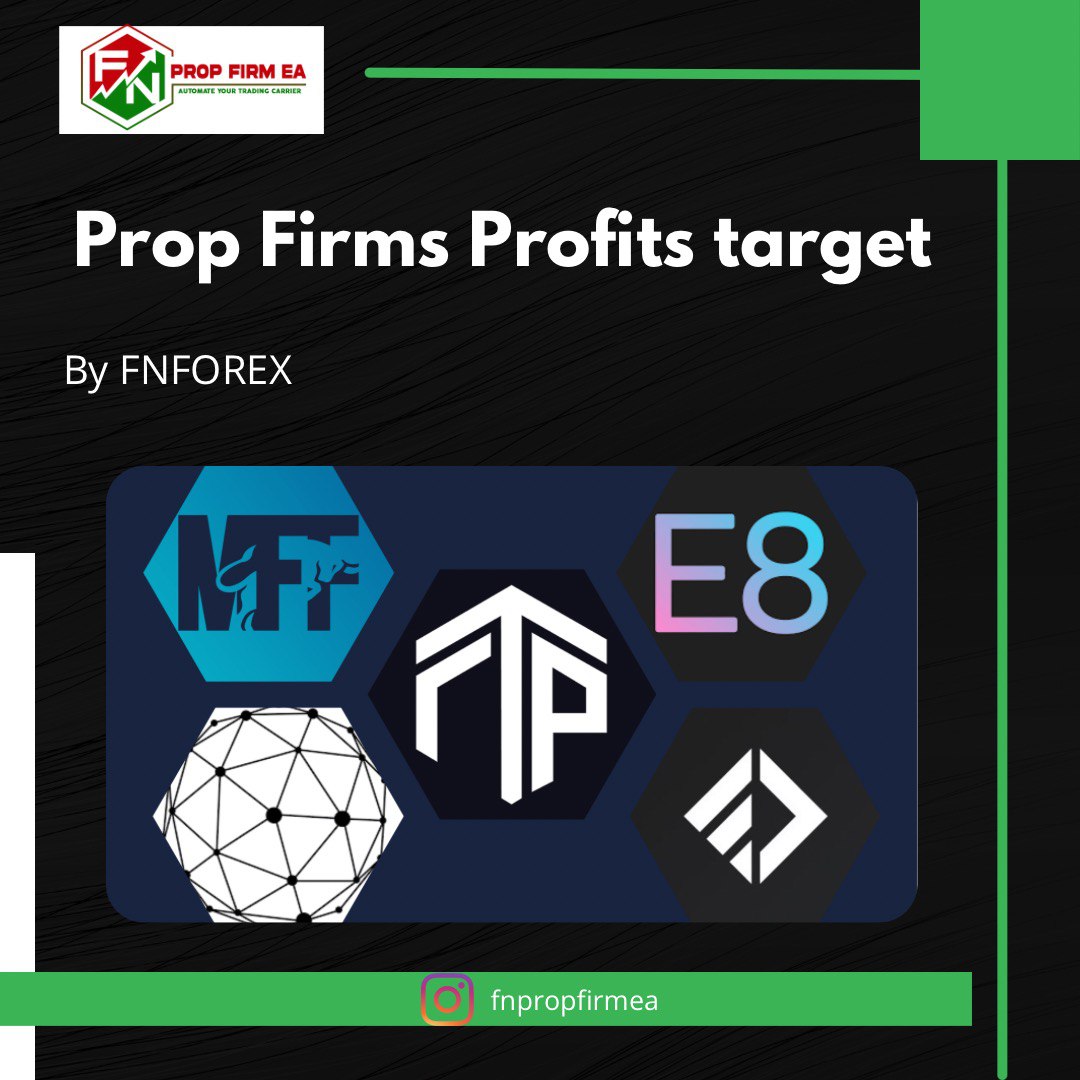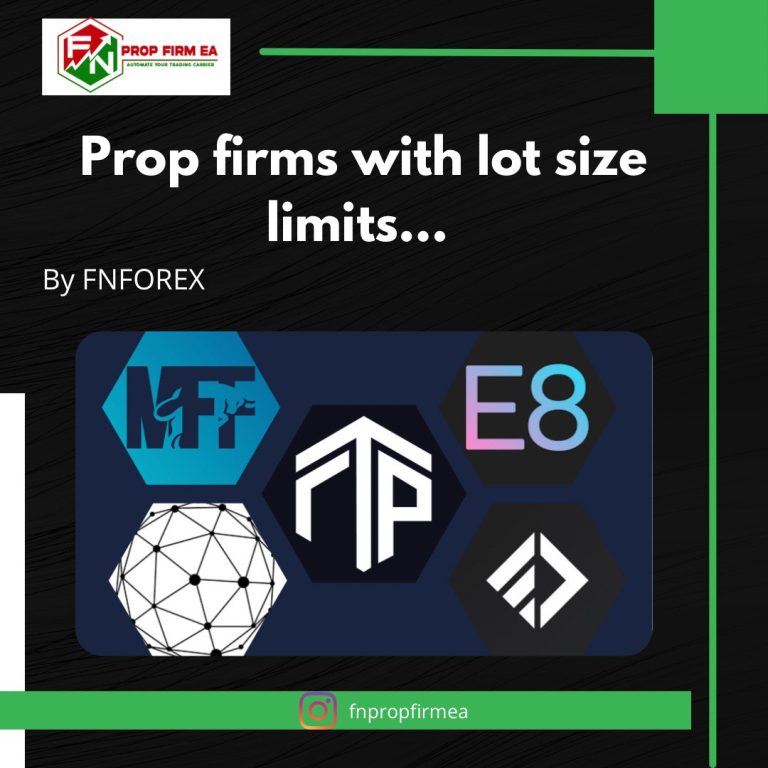Understanding Proprietary Trading Firm Profit Targets

Proprietary trading firms are a popular option for traders looking to work with more significant amounts of funding without risking their own capital. These firms offer traders a chance to earn a profit by trading on the firm’s behalf. However, prop firms have different funding programs that usually require specific profit targets for completion. In this article, we will explore the profit targets required by some of the leading proprietary trading firms.
What are Proprietary Trading Firms?
Proprietary trading firms are financial institutions that invest and trade with their own capital. These firms have become increasingly popular over the last few years, as they offer traders an opportunity to work with more significant amounts of funding without risking their own capital. Proprietary trading firms typically hire traders with a proven track record of success and provide them with access to the firm’s capital to trade on their behalf.
The Importance of Profit Targets
Proprietary trading firms have different funding programs that usually require specific profit targets for completion. These profit targets are essential because they allow the firm to manage risk and ensure that traders are profitable. Profit targets also provide traders with a clear goal to work towards and help to measure their progress.
One-Step Evaluation Profit Target
The one-step evaluation profit target is a type of funding program offered by some proprietary trading firms. This program requires traders to hit a specific profit target in a single evaluation phase. The profit target for this program varies depending on the firm. For instance, E8 Funding requires traders to hit an 8% profit target in phase one, while Alpha Capital Group requires traders to hit an 8% profit target in the first phase.
Two-Step Evaluation Profit Target
The two-step evaluation profit target is another type of funding program offered by some proprietary trading firms. This program requires traders to hit a specific profit target in two evaluation phases. The profit target for this program varies depending on the firm. For instance, E8 Funding requires traders to hit an 8% profit target in phase one and a 5% profit target in phase two, while Alpha Capital Group requires traders to hit an 8% profit target in phase one and a 5% profit target in phase two.
Three-Step Evaluation Profit Target
The three-step evaluation profit target is a funding program offered by some proprietary trading firms. This program requires traders to hit a specific profit target in three evaluation phases. The profit target for this program varies depending on the firm. For instance, E8 Funding requires traders to hit an 8% profit target in phase one, a 5% profit target in phase two, and a 5% profit target in phase three.
Direct Funding Profit Target
Direct funding profit targets are set by proprietary trading firms that provide traders with direct access to the firm’s capital. These firms require traders to hit specific profit targets to continue trading with the firm’s funding. The profit target for this program varies depending on the firm. For instance, BuoyTrade requires traders to scale their accounts to 5% or 10% and withdraw a profit split, while Audacity Capital requires traders to hit a 10% profit target in phase one and a 10% profit target in phase two.
Assessment Management Profit Target
Assessment management profit targets are set by some proprietary trading firms to manage risk. These firms require traders to hit specific profit targets to move on to the next evaluation phase. The profit target for this program varies depending on the firm. For instance, Fidelcrest requires traders to hit a 10% profit target in phase one and a 5% profit target in phase two for normal micro and aggressive micro accounts. On the other hand, for aggressive accounts, traders are required to hit a 20% profit target in phase one and phase two.
Classic & Rapid Profit Targets
Classic and Rapid profit targets are set by some proprietary trading firms for different funding programs. Classic profit targets require traders to hit specific profit targets in two evaluation phases, while Rapid profit targets require traders to hit specific profit targets in one evaluation phase. The profit target for this program varies depending on the firm. For instance, Bespoke Funding requires traders to hit an 8% profit target in phase one and a 5% profit target in phase two for Classic and Rapid programs.
Low-Risk and Aggressive Profit Targets
Low-risk and aggressive profit targets are set by some proprietary trading firms for different funding programs. Low-risk profit targets require traders to hit a lower profit target, while aggressive profit targets require traders to hit a higher profit target. The profit target for this program varies depending on the firm. For instance, FTUK requires traders to hit a 10% profit target for low-risk accounts and a 25% profit target for aggressive accounts.
Conclusion
Proprietary trading firms offer traders an opportunity to work with more significant amounts of funding without risking their own capital. However, these firms have different funding programs that usually require specific profit targets for completion. The profit targets are essential because they allow the firm to manage risk and ensure that traders are profitable. Traders should choose a proprietary trading firm that offers a funding program that suits their trading style and goals.
contact passftmofast.com To pass all your prop firm evaluations and managing of your prop firm accounts
contact fnpropfirmEA for the best prop firm robots






